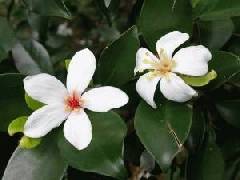Aleurites Montana
Scientific Name: Aleurites Montana
Family:
Euphorbiaceae
Vernacular names:
Wood-oil tree, mu-tree, Cantonese wood-oil tree, abrasin-oil tree (En). Abrasin, arbre à huile de bois (Fr). Falso castanheiro (Po).
Origin and geographic distribution:
Native to Myanmar, Thailand, Srilanka,Indo-China and southern China. It has been introduced into many tropical and subtropical areas. In tropical Africa it has been introduced and has sometimes naturalized, e.g. in Kenya, Tanzania, Malawi, Zambia, Zimbabwe, Mozambique and Madagascar. On a commercial scale it has been grown in Malawi and Madagascar.
Ecology:
Planted in areas with annual rainfall of 850–2000 mm and average annual temperatures of 15–27°C. In tropical areas it is planted at altitudes of 800–2000 m. Its requirement of low temperatures for flower initiation is less than that of Vernicia fordii and it is sensitive to frost. Vernicia montana is often grown on slopes, but grows well on flat land provided it is well-drained. It prefers slightly acid soils and is susceptible to accumulations of ash; it occurs on soils of pH 5.5–8.0. Adequate soil fertility is needed for good production.
Chemical Compounds:





